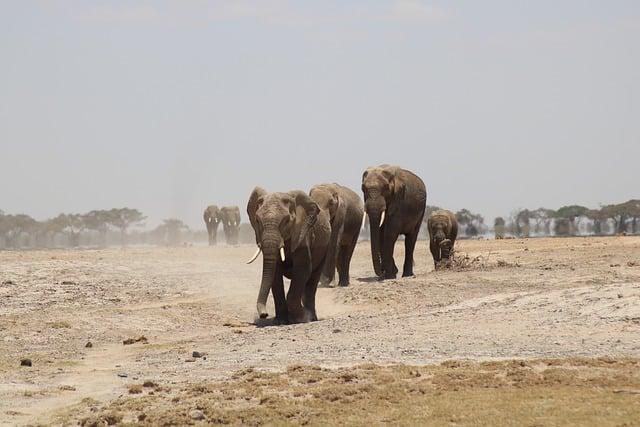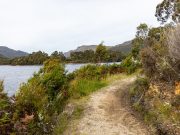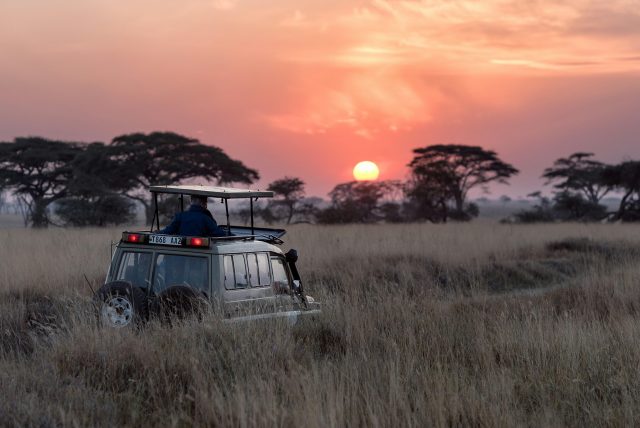In the heart of Africa, where the golden savannas stretch endlessly and the silhouettes of majestic wildlife paint the horizon, lies an industry as vibrant and complex as the ecosystems it celebrates—the safari industry. This realm of adventure and wonder, which attracts millions of visitors from around the globe, promises an encounter with nature’s most breathtaking spectacles. Yet, beneath the allure of the wild and the thrill of discovery, a question stirs quietly, much like the rustle of leaves in the wind: How fair is the distribution of profits generated by this thriving enterprise? As we embark on this exploration, we delve into the intricate web of stakeholders—from local communities and conservationists to tour operators and international investors—each weaving their own narrative in the grand tapestry of Africa’s safari industry. This article seeks to unravel the layers of economic equity, examining who truly benefits from the safari experience and what it means for the future of both the people and the wildlife that call this extraordinary land home.
Examining Revenue Streams and Stakeholder Benefits
In the vibrant and complex ecosystem of Africa’s safari industry, understanding the distribution of revenue is essential to evaluating its fairness. The revenue streams are diverse, encompassing park entry fees, lodging, safari tours, and souvenirs, among others. While these streams collectively generate substantial income, the allocation of profits often sparks debate. For instance, local communities frequently bear the brunt of environmental and social impacts without receiving proportional financial benefits. This imbalance raises critical questions about how profits are shared and who truly benefits from the burgeoning safari tourism market.
Key stakeholders such as local communities, conservation groups, private investors, and government entities all play pivotal roles in this industry. Ideally, profit distribution should reflect the contributions and sacrifices of each group. However, current practices often prioritize the interests of investors and government bodies, leaving local communities and conservation efforts underfunded. The challenge lies in crafting a model that ensures equitable distribution, supporting not only economic growth but also the preservation of wildlife and cultural heritage. A fairer distribution model could foster a more sustainable and inclusive industry, benefiting all parties involved.

Unequal Earnings: The Disparity Among Safari Workers
In the vibrant world of Africa’s safari industry, an intricate tapestry of roles exists, each contributing uniquely to the overall experience. Yet, beneath this surface of adventure and discovery lies a stark reality: the earnings gap among safari workers. From seasoned guides who weave narratives of the wild to the diligent support staff ensuring seamless operations, the disparity in compensation is evident. While some employees enjoy the fruits of a burgeoning tourism industry, others struggle to make ends meet, raising critical questions about the fairness of profit distribution.
Several factors contribute to this imbalance, including:
- Experience and Skills: Highly experienced guides and naturalists, often possessing specialized skills, command higher salaries compared to entry-level workers.
- Geographic Location: Workers in high-demand safari destinations may receive better compensation than those in less popular areas.
- Employment Type: Permanent staff often enjoy more benefits and job security than seasonal or temporary workers.
Addressing these disparities requires a nuanced approach, recognizing the diverse roles within the industry and ensuring equitable rewards for all contributors.

The Role of Local Communities in Shaping Equitable Profits
Local communities are the heartbeat of Africa’s safari industry, and their involvement is crucial in ensuring that profits are shared equitably. Community-based tourism initiatives have emerged as powerful tools for integrating local voices into the profit-sharing equation. These initiatives often involve the creation of conservancies and community-managed wildlife reserves, which enable locals to have a stake in the tourism activities that take place on their ancestral lands. Through these partnerships, communities can receive direct financial benefits, as well as indirect gains such as improved infrastructure and social services.
However, the effectiveness of these initiatives depends on several factors. It’s essential that community members are genuinely included in decision-making processes, rather than being token participants. Moreover, transparent accounting practices must be implemented to ensure that profits are not only distributed fairly but also used effectively for community development. Some key aspects that need attention include:
- Establishing fair compensation mechanisms for land use and wildlife conservation.
- Investing in education and training to build local capacity and ensure meaningful employment opportunities.
- Promoting cultural preservation by respecting traditional knowledge and practices.
By addressing these areas, the safari industry can create a more balanced economic model that honors the contributions of local communities and sustains their environments for generations to come.

Strategies for a More Inclusive and Fair Distribution Model
Ensuring a more equitable allocation of profits within Africa’s safari industry requires innovative and thoughtful approaches. One effective strategy involves empowering local communities who are often the stewards of the land and wildlife that attract tourists. Collaborative management models can be established where local populations have a stake in the safari enterprises. This not only fosters a sense of ownership but also ensures that a fair share of the profits directly benefits those who live in and care for these areas.
- Community-based tourism initiatives: Encourage the formation of local cooperatives that manage safari operations, ensuring profits are reinvested into the community.
- Fair trade certification: Implement certification programs that recognize and reward safari businesses that adhere to ethical profit distribution practices.
- Transparent revenue-sharing agreements: Establish clear and accountable financial arrangements between safari operators and local communities.
- Capacity building and education: Invest in training and education programs to equip local residents with the skills needed to take on various roles within the industry.
By integrating these strategies, the safari industry can move towards a model that is not only profitable but also just and sustainable, ensuring long-term benefits for both the environment and the people who call it home.
Concluding Remarks
As the sun sets over the vast savannah, casting its golden glow on the thriving wilderness, we are left to ponder the intricate tapestry of profit distribution within Africa’s safari industry. The journey through the plains of economic equity reveals a landscape as diverse and complex as the ecosystems it supports. While some stakeholders enjoy the fruits of this vibrant industry, others remain in the shadows, yearning for a fair share of the bounty. As we pack away our safari gear and return to our everyday lives, the questions linger, urging us to consider how we can contribute to a more balanced and equitable future. The call for change is as persistent as the rhythm of the African drumbeat, echoing across the continent, reminding us that true progress lies in the harmony of shared prosperity. Let us move forward with awareness and intention, ensuring that the wonders of the safari benefit all who call this magnificent land home.
































